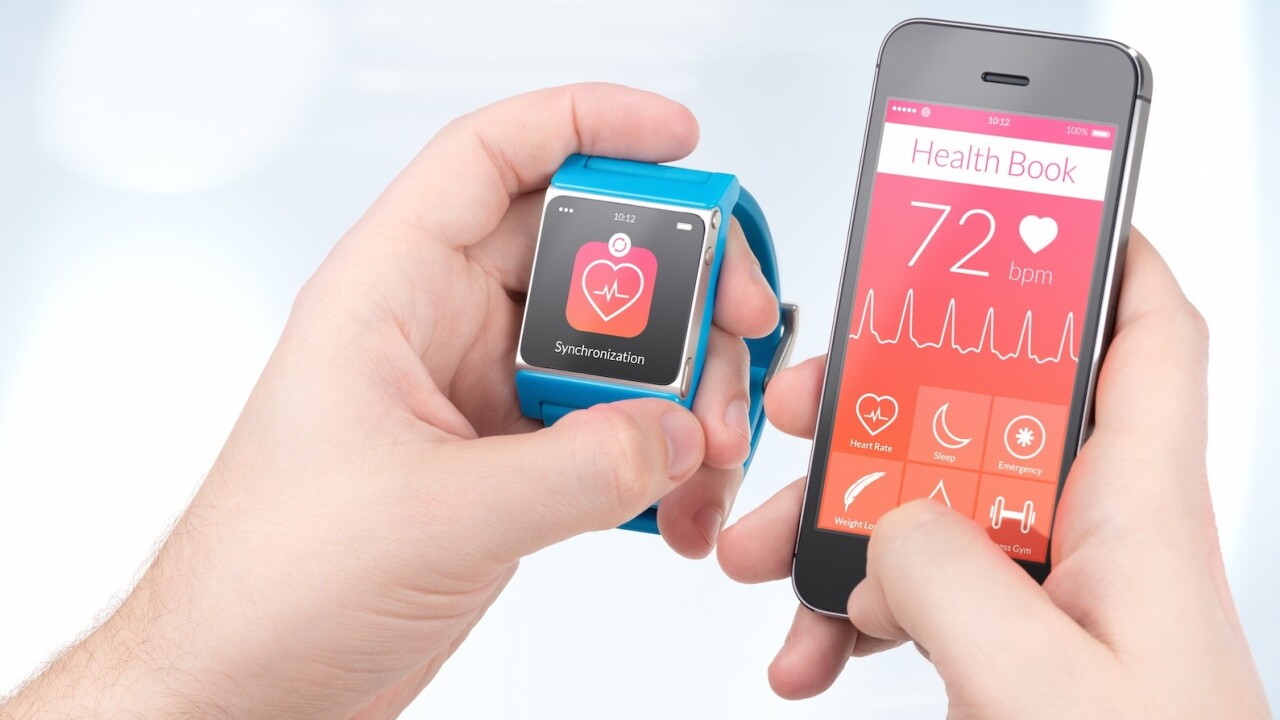
With the advent of the smart watch, there’s potential for a lot more innovation in the realm of health and fitness. As more and more customers move to wearables, data collection becomes ever more robust.
To find out what could be next for these tech companies, I asked nine entrepreneurs from YEC the following question:
As the Apple Watch and other smart watches become part of everyday life for consumers, what is one way you predict health/fitness tech companies will (or should) expand or improve their offerings?
Their best answers are below:
1. Comprehensive Profiles
 With wearable tech and the Internet of Things, companies need to focus on interconnectivity and connect data to create the most comprehensive profile possible for an individual. From how much they weigh, to how many hours they slept, to calories consumed, to what’s inside their fridge – connecting this data and making it useful to individuals is the new frontier. What if you tell your wearable that you’re on a diet and only want to consume 1000 calories, and your IoT connected fridge then tells you what you have available and spits out recipes for you to stay under your caloric goal? – Marcela DeVivo, National Debt Relief
With wearable tech and the Internet of Things, companies need to focus on interconnectivity and connect data to create the most comprehensive profile possible for an individual. From how much they weigh, to how many hours they slept, to calories consumed, to what’s inside their fridge – connecting this data and making it useful to individuals is the new frontier. What if you tell your wearable that you’re on a diet and only want to consume 1000 calories, and your IoT connected fridge then tells you what you have available and spits out recipes for you to stay under your caloric goal? – Marcela DeVivo, National Debt Relief
2. Medical Alerts
 While our pulse and body movements tell the watch how hard we’re working out, there are many other features to look forward to. For one, medical alerts would help users know when their blood sugar is low and/or if they need to seek medical treatment for an irregular heartbeat. In other words, smart watches will get a lot smarter in the years to come, maybe even scheduling or calling the hospital for us. – Nicole Munoz, Start Ranking Now
While our pulse and body movements tell the watch how hard we’re working out, there are many other features to look forward to. For one, medical alerts would help users know when their blood sugar is low and/or if they need to seek medical treatment for an irregular heartbeat. In other words, smart watches will get a lot smarter in the years to come, maybe even scheduling or calling the hospital for us. – Nicole Munoz, Start Ranking Now
3. Seamless Life integration
 The smart watch, by function, is intended to fit into a user’s life, not disrupt it. It’s not a new device — it’s a classic one with increased functionality. Pharma and fitness tech companies have to be aware of the fact that users don’t want to feel like they’re making a lifestyle change; they want access to more concrete and accurate information and the ability to customize outputs. It’s not about reinventing the wheel, it’s about looking at what users are currently interacting with and finding a way to make that interaction more seamless. – Mac Morgan, Tonic Design Co.
The smart watch, by function, is intended to fit into a user’s life, not disrupt it. It’s not a new device — it’s a classic one with increased functionality. Pharma and fitness tech companies have to be aware of the fact that users don’t want to feel like they’re making a lifestyle change; they want access to more concrete and accurate information and the ability to customize outputs. It’s not about reinventing the wheel, it’s about looking at what users are currently interacting with and finding a way to make that interaction more seamless. – Mac Morgan, Tonic Design Co.
4. Goal-Oriented Tracking
 Believe it or not, I think the way health and fitness tech vendors will stand out is to offer personalized, human coaching to customers trying to reach particular goals. The technology can track exercise, food intake and even sleep, but people don’t necessarily know what to do with that information or what they should change for better results. That’s the missing piece right now. – Alexandra Levit, Inspiration at Work
Believe it or not, I think the way health and fitness tech vendors will stand out is to offer personalized, human coaching to customers trying to reach particular goals. The technology can track exercise, food intake and even sleep, but people don’t necessarily know what to do with that information or what they should change for better results. That’s the missing piece right now. – Alexandra Levit, Inspiration at Work
5. Fitness Company Partnerships
 I think it would be great if smart watches partnered with fitness companies such as LA Fitness, Soul Cycle and Planet Fitness to create apps where members can keep track of their workouts, sign up for classes and receive membership notifications. The app offering would provide a feeling of motivation and exclusivity for smartwatch owners. – Shalyn Dever, Chatter Buzz Media
I think it would be great if smart watches partnered with fitness companies such as LA Fitness, Soul Cycle and Planet Fitness to create apps where members can keep track of their workouts, sign up for classes and receive membership notifications. The app offering would provide a feeling of motivation and exclusivity for smartwatch owners. – Shalyn Dever, Chatter Buzz Media
6. Integration With Medicine
 The next step, when the data becomes more accurate, is integration with healthcare providers. As it is currently, there is simply too much data – but as technology improves and as companies improve analysis, the data will become one of the most powerful tools for progressing medicine from reactive to preventative healthcare. It will start at the top (Patronus and Canyon Ranch come to mind) with concierge medicine, then progress towards the middle end of the spectrum (Vitalyze.me, Omada Health), then on to the full spectrum of healthcare as it becomes increasingly accepted. – Alec Bowers, Abraxas Biosystems
The next step, when the data becomes more accurate, is integration with healthcare providers. As it is currently, there is simply too much data – but as technology improves and as companies improve analysis, the data will become one of the most powerful tools for progressing medicine from reactive to preventative healthcare. It will start at the top (Patronus and Canyon Ranch come to mind) with concierge medicine, then progress towards the middle end of the spectrum (Vitalyze.me, Omada Health), then on to the full spectrum of healthcare as it becomes increasingly accepted. – Alec Bowers, Abraxas Biosystems
7. Behavioral Awareness
 I think the most interesting potential for health and fitness technologies is to help people become aware of behaviors they’re not currently aware of. Studies show that simple awareness of things like when cravings kick in, posture, weight, stress levels, etc. has a positive effect on our ability to change them. It’s hard for the human brain to be monitoring all of these things at the same time (and you’d probably go crazy if you had to), so it’s the perfect job for technology to do. All you need is a little vibration or a notification to become aware of something, and then you can implement a change. – Mattan Griffel, One Month
I think the most interesting potential for health and fitness technologies is to help people become aware of behaviors they’re not currently aware of. Studies show that simple awareness of things like when cravings kick in, posture, weight, stress levels, etc. has a positive effect on our ability to change them. It’s hard for the human brain to be monitoring all of these things at the same time (and you’d probably go crazy if you had to), so it’s the perfect job for technology to do. All you need is a little vibration or a notification to become aware of something, and then you can implement a change. – Mattan Griffel, One Month
8. Increased Privacy Protection
 As more people track their health variables, they’ll want more control over which third parties have access to them and when. While people may be more open to sharing their health data, they’ll still want to do so under informed consent. As tracking health and fitness data becomes more common, an inevitable legal question will arise over what variables employers and insurance companies can be expected to gain access to and under what circumstances. Companies that offer security and control to users will gain a competitive advantage over those that give unauthorized access to third parties. – Dave Nevogt, Hubstaff.com
As more people track their health variables, they’ll want more control over which third parties have access to them and when. While people may be more open to sharing their health data, they’ll still want to do so under informed consent. As tracking health and fitness data becomes more common, an inevitable legal question will arise over what variables employers and insurance companies can be expected to gain access to and under what circumstances. Companies that offer security and control to users will gain a competitive advantage over those that give unauthorized access to third parties. – Dave Nevogt, Hubstaff.com
9. Perpetual Personal Trainers
 Not everyone has the time or the desire to invest in a personal trainer to achieve fitness or lifestyle goals. Even with one, they can only monitor your activities in the gym. However, with the advent of smartwatches, a personal trainer could be on your body at all times. Increasingly efficient and personable apps on smartwatches will facilitate a trend towards people having a personal trainer on them to consistently enforce their commitment to health goals. – Sathvik Tantry, FormSwift
Not everyone has the time or the desire to invest in a personal trainer to achieve fitness or lifestyle goals. Even with one, they can only monitor your activities in the gym. However, with the advent of smartwatches, a personal trainer could be on your body at all times. Increasingly efficient and personable apps on smartwatches will facilitate a trend towards people having a personal trainer on them to consistently enforce their commitment to health goals. – Sathvik Tantry, FormSwift
Read Next: 10 ways to monetize your mobile app
Image credit: Shutterstock
Get the TNW newsletter
Get the most important tech news in your inbox each week.




